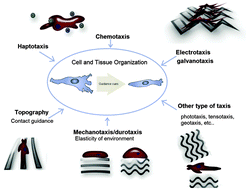Influence of electrotaxis on cell behaviour
Abstract
Understanding the mechanism of cell migration and interaction with the microenvironment is not only of critical significance to the function and biology of cells, but also has extreme relevance and impact on physiological processes and diseases such as morphogenesis, wound healing, neuron guidance, and cancer metastasis. External guidance factors such as topography and physical cues of the microenvironment promote directional migration and can target specific changes in cell motility and signalling mechanisms. Recent studies have shown that cells can directionally respond to applied electric fields (EFs), in both in vitro and in vivo settings, a phenomenon called electrotaxis. However, the exact cellular mechanisms for sensing electrical signals are still not fully well understood, and it is thus far unknown how cells recognize and respond to electric fields, although some studies have suggested that electro-migration of some cell surface receptors and ion channels in cells could be involved. Applied electric fields may have a potential clinical role in guiding cell migration and present a more precise manageability to change the magnitude and direction of the electric field than most other guidance cues such as chemical cues. Here we present a review of recent studies used for studying electrotaxis to point out similarities, identify points of disagreement, and stimulate new directions for investigation. Insights into the mechanisms by which applied EFs direct cell migration, morphological change and development will enable current and future therapeutic applications to be optimized.


 Please wait while we load your content...
Please wait while we load your content...